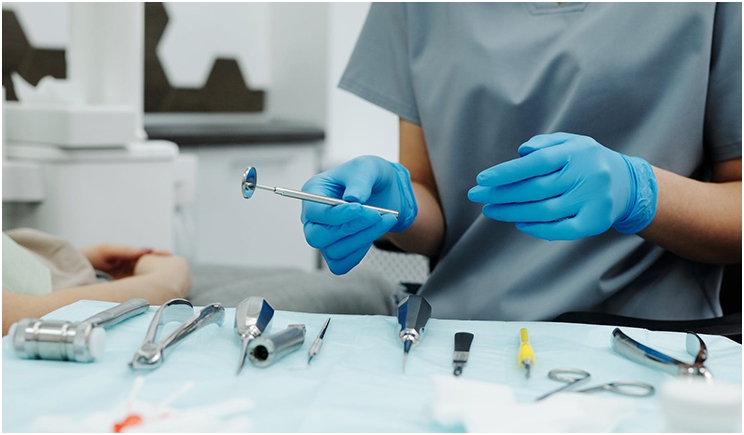
Beginning with the COVID-19 shutdown, Levin Group has focused intensely on building models and strategies to help dental practices recover. We have worked with dental organizations, societies, and companies to provide extensive education including The Levin Group 24-Month COVID-19 Recovery Timeline, which began on June 1, 2020, and has so far proven accurate during these uncertain times.
Dentistry has never seen a situation where we had a shutdown, federal loans, a reopening, extreme busyness (due to pent-up demand), and certain dentists and staff who were not willing to come back to their practices. We are now starting to emerge from Phase 2 of the timeline, which is marked by the end of pent-up demand and the beginning of lower patient volume.
As quickly as we have experienced everything up until now, it does not appear that you’ll move through your practice turnaround as quickly. To have success, you’ll need to steady yourself and get back to the fundamentals of dental practice.
How to Apply the Basics
In a crisis, it is important remember the basics. Excellent systems, documentation for team training, an understanding of how to measure results, effective scripting, and comprehensive internal marketing have always played a major role in allowing practices to experience success.
However, we see many practices deviating from proven systems and strategies as they attempt to recover in the new environment of COVID-19. The challenge is that when the basics are ignored, things start to fall apart. There may be a quick short-term fix, but it might not work out in the long run. It may not even be a good short-term fix.
In a business turnaround, CEOs understand that you analyze and focus on key basics. Prior to the COVID-19 crisis, Levin Group measured 25 key performance indicators (KPIs) monthly. Each indicator gave us excellent information regarding practice strengths, weaknesses, opportunities, and threats.
Today, we only emphasize the 13 that will have the greatest impact on increasing practice production, which is the number one factor in the recovery. Practices with excellent production will have excellent revenue, cash, and income—everything needed to succeed and recover strong. How long the recovery will take and how far it will go for each practice will depend on how well the basics are applied and which ones are emphasized.
These important KPIs, such as the number of active patients and the number of unscheduled patients, influence production and should be understood in terms of whether they indicate positive or negative results. For example, most practices worked on reactivating overdue patients when the front desk staff had time. Today the number of inactive patients is high, so we now recommend that reactivation take place daily.
Patient reactivation may be, for now, the number one factor in maintaining and increasing practice production. The goal has always been to reactivate 100% of patients who don’t have an appointment—an achievable goal under normal conditions. So, during COVID-19 we set the recovery goal at 93%, which allows practices to properly design phone calls, texts, and emails to achieve that level. This is an example of simply modifying a basic system to accommodate current conditions.
The Basics Will Always Be the Basics
I am often asked where to start when reorienting a practice. Of course, I start with the basics, but my more specific answer is to begin with scheduling. Most people don’t realize the many ways that a schedule can hold a practice back. By designing a schedule that focuses on reaching the production goal while simultaneously creating a smooth flow and low fatigue for the doctor and team, the practice will move in the right direction.
Tracking daily and monthly production goals will help indicate how scheduling performance is working. For example, there are many ways the schedule can affect production. An insufficient number of current and new patients, poor performance in reactivating on-schedule patients, and a high number of no-shows all contribute to missing practice production goals.
If a practice is missing its production goals, it should then begin to look at other KPIs or metrics to determine which specific factors are contributing to lower production. These factors can then be addressed specifically to improve practice performance.
The schedule is often the “command and control” system that will influence other systems, and that is why I recommend starting there. Many practices have huge scheduling capacity that they can access by mathematically realigning the schedule.
I have seen hundreds of practices that thought they were at maximum capacity only to find that they had an additional 30% after they revamped their scheduling system. Having a schedule that maximizes patient volume at a time when it is significantly lower will be critical for many practices going forward.
Summary
One of the first things taught in business schools about a business turnaround is that a radical deviation from the basics is often a critical mistake in a crisis. Certainly, things need to be done differently. But it’s the fundamentals that first gave the practice success that will help it to recover faster, better, and deeper.
Dr. Levin is the CEO and founder of Levin Group, a leading practice management consulting firm that has worked with over 30,000 practices to increase production. A recognized expert on dental practice management and marketing, he has written 67 books and more than 4,000 articles and regularly presents seminars in the United States and around the world. To contact Dr. Levin or to join the 40,000 dental professionals who receive his Practice Production Tip of the Day, visit levingroup.com or email rlevin@levingroup.com.
Related Articles
What Will Dentistry Look Like After COVID-19?
The One Thing to Avoid During COVID-19
How to Prepare for Changes in Your Dental Staff











